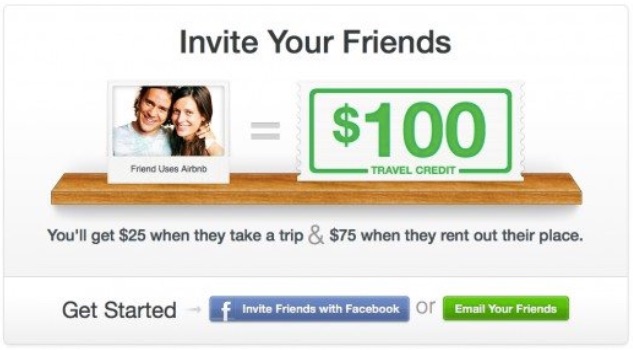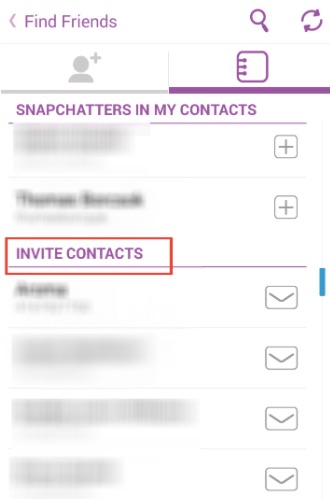You come up with a great idea for a new app – one you are sure is going to catch on. You pick a great name, work closely with designers and developers, and – finally – pull the trigger. You get a few early adopters, but interest in your new release quickly fizzles.
What happened? All around you, apps are taking off and gaining seemingly unlimited traction, while you are barely a blip in the app store rankings. What do the tech world’s success stories have going for them that you don’t?
The answer may be as simple as viral loops.
If you look at viral success stories like Airbnb, Dropbox, and Uber, they didn’t grow by marketing to individual people. They grew by getting invested users to bring them more customers through the use of referral programs and sharing incentives. This dramatically increased their reach while having a negligible effect on their customer CPA.
Want to be your own viral success story? It is time to start looking for your viral loop.
What is a Viral Loop?
A viral loop is how you get your current users to invite the next set of new users.
This is more easily understood with an example. Take Dropbox’s highly-successful “refer a friend, and you both get free space” promotion, which is estimated to have increased signups by 60%.
If you are a new Dropbox user, you will, at some point, be introduced to the company’s referral program, either while on the site or when encountering the company’s messaging elsewhere (on social media or via email marketing, for example). You see value in the promotion, so you take advantage of it by inviting ten friends, two of whom become new users. Each of those new users is now eligible to take advantage of the same referral rewards, creating the potential for viral growth.
Here, the viral loop involves four steps:
A new user tries Dropbox.
Dropbox offers the user an incentive to share the product.
The user sees value in the offer.
The user invites new users, who take advantage of the same referral program.
These aren’t new users Dropbox has to go out and advertise to individually, making the system cost-effective (in terms of per-user acquisition costs) and scalable. The viral loop works on its own, bringing new users into the system without a direct investment on Dropbox’s part.
Types of Viral Loops
As you begin thinking about how viral loops could be used to help grow your business, be aware that there are plenty of variations to choose from. Typically, viral loops tend to fall into two categories: those based on intended action and those driven by different types of incentives.
Intended-Action Loops
In the example above, Dropbox represents a new-user viral loop; that is, the goal of the system is to acquire new users.
However, viral loops can serve other purposes as well. Frac.tl illustrates the example of a content-sharing viral loop, in which the primary goal is to get content consumers to share individual content pieces with others:

The team offers two characteristics that are generally required to get a content piece to cycle in this way:
It includes an interactive component that audiences use to create a result or piece of unique content.
It includes a call to action encouraging the user to share the unique piece of created content.
As an example, Fractl offers the recent string of sharable quizzes and tests offered by media sites like Buzzfeed and Playbuzz. Interestingly, in researching the most popular quizzes on Playbuzz’s website, the team found that “77 percent of all Playbuzz quizzes that have been shared 100,000 times or more were personality quizzes.”

Incentive-Driven Loops
Viral loops can also be identified based on the type of incentive offered. In the case of Dropbox, Justin Scott of Growth Devil would call this a “basic viral loop” – you “share a product with your friends, and you get more of it.”
He goes on to identify four other types of viral loops, summarized below:
Savings-driven viral loop – Both sharer and receiver are given a coupon (typically a percent-off or a credit towards the product). Many of Uber’s viral promotions fall into this category.
Goal-driven viral loop – The sharer is incentivized to help receivers achieve the same goal. Many Groupon promotions operate this way. If you purchase a manicure coupon, for example, you likely have friends who would go with you, making a “two-for-one” promotion appealing (while also driving viral results).
Value-driven viral loop – These structures are two-sided viral loops, through which incentives benefit both the sharer and receiver equally. Dropbox fits this structure as well. You don’t just get more storage space for yourself; your receiver gets the incentive as well.
Social cause viral loop – The sharer is incentivized when the company promises to donate to a charity or organization in response to a purchase. These incentives can become viral loops if sharers are incentivized to pass the opportunity on to others in exchange for some benefit to themselves, or if the promotion is simply noteworthy enough for sharers to pass it on to others out of goodwill.
It is important to note here that viral loops in practice may overlap these categories. Dropbox, as mentioned above, can be thought of as both a basic viral loop and a value-driven viral loop. One of Airbnb’s loops – pictured below – can be considered a basic loop, savings-driven viral loop, and a value-driven viral loop.
This isn’t intended to get you arguing about what types of viral loops every referral promotion you see constitutes. Instead, I am bringing up the nuances of the situation to help you better plan your own viral loops.

Finding Your Viral Loop
Now that you understand what viral loops are and how they work, it is time to start mapping them to your customer flows so that you can benefit from viral growth – just like the big guys.
Here’s how to do it…
Step #1 – Choose a referral scheme.
First, begin by determining what you will offer users to get them to take the action you want. In the case of a low-risk action – for example, sharing a piece of content – you may not need a monetary incentive. You may only need to facilitate viral sharing and then prompt consumers to do so.
In other cases, you may need to put something more substantial on the line. Ask yourself the following questions to choose an appropriate referral scheme:
Are my users likely to be motivated by monetary savings, free product or some other incentive?
How much can I reasonably afford to put into an incentive without compromising profitability?
Which referral scheme will have the biggest impact on consumers at the lowest possible cost?
What incentives minimize the risk associated with trying a new product?
Which incentives are most likely to motivate users into action?
What incentives can I create that offer value to both the sharer and the receiver?
Which of my incentive options are most likely to help me acquire the right users (rather than any users)?
Keep in mind that you may need to test different referral incentives to find the right combination for your users. Pay attention to your current marketing strategies and what you are hearing from your customer service teams. Opportunities for viral loops may be staring you in the face – you just have to take advantage of them.
Step #2 – Define your loop’s entry point and stages.
With your referral scheme in place, map your viral loop’s entry point(s) and individual stages according to the Dropbox example given above.
Let’s do another example, using Snapchat in this case. When you create a Snapchat account, you are asked to grant access to the list of contacts on your phone. Contacts who are not current Snapchat users appear in an “Invite Contacts” list under one featuring existing Snapchatters in your contact list.

Here’s how Snapchat’s viral loop can be broken down:
A new user signs up for Snapchat.
Snapchat suggests contacts to invite.
The new user adds contacts.
Snapchat doesn’t include an incentive (they assume having your friends on the platform is incentive enough), which makes this viral loop incredibly simple. Yours may have more steps, but remember, if your loop is too complicated to complete, users likely won’t jump through the hoops.
Step #3 – Test exits from each stage of your loop.
Once you have identified each step in your loop, you can test its efficiency to make it even more effective. The following are a few suggestions for possible tests that could be carried out at each level of Snapchat’s loop:
“A new user signs up for Snapchat.”
Where are new users coming from? (eg. Facebook posts, blog posts, app stores, etc.)
Are there potential entry points we aren’t currently using that should be added?
What is the average lifespan of users from each source?
“Snapchat suggests contacts to invite.”
Would the “Invite Contacts” list be more effective in another position?
Should the “Invite Contacts” text be formatted differently?
Would an in-app onboarding system lead to more invites?
“The new user adds contacts.”
How long do new users wait, on average, before adding contacts?
What can be learned about users who are likely to add contacts versus those who aren’t?
Would an incentive lead to more invitations?
Ultimately, viral success is a numbers game. It isn’t some mysterious process that benefits a rare few. It comes down to knowing how users work within your system and how you can incentivize them to grow your business for you. Identifying your viral loop may take just a few moments, but optimizing it should be a lifelong process.
What is your viral loop? What kinds of tests led you to your current loop? Share more by leaving me a comment below.
Innovative SEO services
SEO is a patience game; no secret there. We`ll work with you to develop a Search strategy focused on producing increased traffic rankings in as early as 3-months.
A proven Allinclusive. SEO services for measuring, executing, and optimizing for Search Engine success. We say what we do and do what we say.
Our company as Semrush Agency Partner has designed a search engine optimization service that is both ethical and result-driven. We use the latest tools, strategies, and trends to help you move up in the search engines for the right keywords to get noticed by the right audience.
Today, you can schedule a Discovery call with us about your company needs.
Source:





